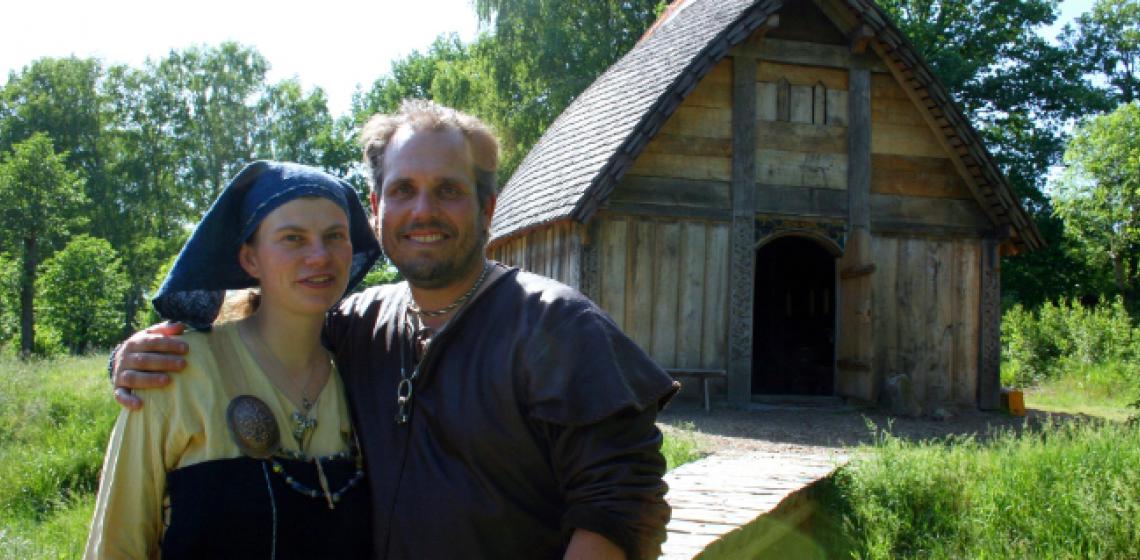Ale Vikingagård (SE)

At Ale, a Viking Age Chieftains Farm is constructed after an example from Tissø in Denmark. It is complemented by finds at Viking settlements in Norway and local context from the 10th century.
Goal is to make a high quality reconstruction of a chieftain’s farm from the 10th century, where all generations can experience the Viking-Age re-enacted. By seeing, feeling, smelling, tasting, and trying, the visitors will be given the opportunity to realize the Viking-Age as it was in the western part of Scandinavia. The longhouse will be followed by others: dwellings, enclosures for animals, workshops and a great hall 36 metres long.
The Farm started as an EU project, but is now a permanent municipal activity. It is very likely that this area was inhabited in Viking Age, but that traces haven’t been uncovered yet in that great quantities. Nowadays, this is a site for events, game, crafts and excursions. The fire place in the longhouse is the centre for many meetings and meals although there is also a modern restaurant. There is attention to living history and visitors are actively immersed into activities they don’t only watch but also try out, archery and bread baking, working with knives et cetera.
Archaeologists were involved at the start, and still can be called for advise on an ad hoc basis as need be. Furthermore there is a reference group consisting solely of archaeologists and staff.
The Farm does experiment, like life experiments in the longhouse with checking how smoke runs, heat keeps but also for example evaluation of ancient tools based on traces of tools in archaeological finds. The Farm has also started to adjust the vegetation on the site to reflect the ancient farming methods, e.g. hopping of leaves for animal food, building of fences around hazel-trees, harvesting hay with scythe to restore original growth. These measures can however not be considered as experiments as the outcome is known.
